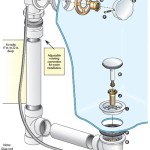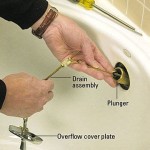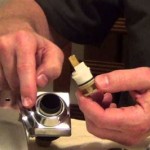How to Wash a Dog Without a Bathtub: A Comprehensive Guide
Maintaining a dog's hygiene is crucial for their health and well-being, as well as for the cleanliness of the home. While a bathtub often seems like the most convenient option for bathing a dog, it is not always accessible or feasible. Many dog owners face situations where a bathtub is unavailable due to travel, living arrangements, or the dog's aversion to the bathtub environment. Fortunately, there are several effective methods for washing a dog without relying on a traditional bathtub. This article will provide a detailed guide on alternative bathing techniques, necessary supplies, and practical considerations to ensure a successful and stress-free experience for both the dog and the owner.
Before initiating any bathing method, it is paramount to prepare the dog appropriately. This involves brushing the dog's coat to remove loose fur and mats, which can become more difficult to manage once wet. Pre-brushing minimizes the risk of tangles and allows the shampoo to penetrate the coat more effectively. Furthermore, it is beneficial to trim the dog's nails beforehand to prevent accidental scratches during the bathing process. A calm and reassuring demeanor from the owner is also essential to minimize anxiety in the dog, especially if they are not accustomed to being bathed.
Choosing the Right Location and Supplies
Selecting an appropriate location is the first step in washing a dog without a bathtub. The chosen area should be easily cleanable, well-ventilated, and preferably located in a space where water drainage is manageable. Several options meet these criteria, including a utility sink, a shower stall, or even an outdoor area during warmer months. If opting for an outdoor bath, ensure the temperature is suitable for the dog to avoid chilling. Regardless of the location, it is advisable to lay down a non-slip surface to prevent accidents. Non-slip mats or towels can provide the necessary traction for the dog.
The next critical step is gathering the necessary supplies. These include a dog-specific shampoo, several towels, a source of lukewarm water, a washcloth or sponge, and potentially a handheld shower attachment or a large pitcher for rinsing. Dog shampoos are formulated to be gentle on the dog's skin and coat, avoiding harsh chemicals that can cause irritation. Human shampoos are generally not recommended due to their different pH levels, which can disrupt the dog's natural skin oils. The number of towels required will depend on the size and breed of the dog; however, having multiple towels on hand is always a good practice. Lukewarm water is ideal for bathing dogs, as it is neither too hot nor too cold, ensuring the dog's comfort. The washcloth or sponge is used for gently cleaning the dog's face and other sensitive areas. A handheld shower attachment can provide a more controlled and efficient rinsing experience, while a large pitcher can serve as a substitute if a shower attachment is unavailable.
Additionally, consider having treats readily available to reward the dog for good behavior during the bathing process. Positive reinforcement can help alleviate anxiety and make the experience more pleasant for the dog. Some owners find it helpful to use lick mats smeared with peanut butter or other dog-friendly spreads to distract the dog while they are being washed.
Alternative Bathing Methods
When a bathtub is unavailable, several alternative bathing methods can be employed effectively. The most suitable method will depend on the dog's size, temperament, and the available resources. Each method requires careful execution to ensure the dog's safety and comfort.
Using a Utility Sink: A utility sink offers a convenient alternative for smaller dogs. The sink's elevated height can be easier on the owner's back compared to bending over a bathtub. To use a utility sink, first, ensure the sink is clean and clear of any obstructions. Place a non-slip mat or towel at the bottom of the sink to provide traction for the dog. Fill the sink with lukewarm water, ensuring the water level is not too high to prevent the dog from becoming overwhelmed. Using a cup or a handheld shower attachment, wet the dog's coat thoroughly. Apply dog-specific shampoo, lathering it gently into the coat. Rinse thoroughly, ensuring all traces of shampoo are removed. Use the washcloth or sponge to clean the dog's face, being careful to avoid getting soap in the eyes. Once rinsed, lift the dog out of the sink and dry them thoroughly with towels.
Using a Shower Stall: A shower stall provides a more spacious alternative for medium to large-sized dogs. Begin by placing a non-slip mat or towel on the shower floor. If the shower has a handheld shower attachment, it can be used to wet and rinse the dog's coat. If not, a large pitcher or bucket can be used as a substitute. Wet the dog's coat thoroughly with lukewarm water, then apply the dog-specific shampoo. Lather the shampoo into the coat, being mindful of any sensitive areas. Rinse thoroughly until all traces of shampoo are gone. Use the washcloth or sponge to clean the dog's face, avoiding the eyes. Once rinsed, dry the dog thoroughly with towels. If the dog is comfortable with it, a low-setting hair dryer can be used to speed up the drying process; however, it is crucial to monitor the temperature to prevent overheating.
Outdoor Bathing: During warmer months, outdoor bathing can be a practical option. Choose a shaded area to prevent the dog from overheating in direct sunlight. Use a garden hose with a spray nozzle to wet and rinse the dog's coat. Ensure the water temperature is lukewarm to avoid shocking the dog with cold water. Apply dog-specific shampoo and lather it into the coat. Rinse thoroughly, ensuring all traces of shampoo are removed. Dry the dog with towels, and allow them to air dry in a safe and supervised environment. Be mindful of potential hazards in the outdoor area, such as toxic plants or insects.
Using a Waterless Shampoo or Wipes: For dogs who are particularly averse to water or when a full bath is not necessary, waterless shampoos or dog-specific grooming wipes can be a convenient option. Waterless shampoos typically come in foam or spray form and are applied to the dog's coat, then massaged in and towel-dried. These products are designed to remove dirt and odors without requiring water. Grooming wipes are pre-moistened cloths that can be used to spot-clean specific areas of the dog's coat, such as the paws or face. While these methods are not a substitute for a thorough bath, they can be useful for maintaining hygiene between baths.
Handling and Drying Techniques
Proper handling and drying techniques are essential for ensuring a positive bathing experience for the dog. Throughout the bathing process, maintain a calm and reassuring demeanor. Speak to the dog in a soothing voice and offer praise and treats to reinforce good behavior. Avoid sudden movements or loud noises, which can startle or frighten the dog.
After rinsing, begin the drying process by gently squeezing excess water from the dog's coat. Use several towels to thoroughly dry the dog, paying particular attention to sensitive areas such as the ears and paws. Rub the towels in the direction of the fur to prevent matting. If the dog is comfortable with it, a low-setting hair dryer can be used to speed up the drying process. Hold the hair dryer at a safe distance from the dog to prevent overheating, and continuously monitor the temperature. Avoid directing the hair dryer at the dog's face or ears. Some dogs may be fearful of the hair dryer's noise and airflow, so it is essential to introduce it gradually and use positive reinforcement.
Once the dog is mostly dry, allow them to air dry in a warm and safe environment. Avoid letting the dog outside immediately after bathing, especially in cold weather, as this can lead to chilling. Continue to monitor the dog for any signs of discomfort or distress. Once the dog is completely dry, brush their coat to remove any remaining tangles and restore its natural shine.
For dogs with longer or thicker coats, it may be necessary to use a specialized grooming brush or comb to prevent matting. Regular brushing between baths can also help maintain the dog's hygiene and reduce the frequency of bathing. It is important to establish a consistent grooming routine to ensure the dog's coat remains healthy and free of tangles.
In conclusion, washing a dog without a bathtub is entirely feasible with the right preparation, supplies, and techniques. By carefully selecting an appropriate location, gathering the necessary supplies, and employing alternative bathing methods, dog owners can maintain their dog's hygiene and well-being even when a bathtub is unavailable. Proper handling and drying techniques are crucial for ensuring a positive and stress-free experience for the dog. By following these guidelines, dog owners can effectively wash their dogs without relying on a traditional bathtub, promoting their pet's health and cleanliness.

How To Clean A Dog Without Bathing Them 3 Ways

How To Bathe Your Dog Without A Hose

How To Wash A Dog Without Bathtub Steps Oodlelife

How To Clean Your Dog Without A Bath 8 Simple Steps Practical Paw The Toolkit

How To Wash Your Dog At Home Dogbath Dogs Dogbylogan Best Shampoo For Tiktok

Simple S To Bath Your Dog Professional Training Tips

Why Does My Dog Baths

How To Bathe A Dog Without Making Them Panic First For Women

How To Bathe A Dog Wash At Home According Vet

How Often Should You Wash Your Dog American Kennel Club








